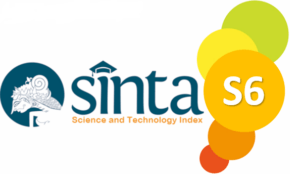PELAKSANAAN RESTORATIVE JUSTICE TERHADAP TINDAK PIDANA NARKOTIKA BERDASARKAN PEDOMAN JAKSA AGUNG NO 18 TAHUN 2021 (STUDI KASUS KEJAKSAAN NEGERI BENGKALIS)
Kata Kunci:
Restorative Justice, Narcotics, Attorney General Guidelines No. 18 Of 2021Abstrak
This research examines the implementation of restorative justice in narcotics crimes based on the Attorney General's Guidelines No. 18 of 2021 at the Bengkalis District Attorney's Office. The narcotics crime is an extraordinary crime that threatens the nation's generation. The research uses sociological legal research methods with descriptive analytical approaches. Data was collected through interviews with prosecutors, suspects, victims, and document studies at the Bengkalis District Attorney's Office. The research results show that the Bengkalis District Attorney's Office has implemented restorative justice for narcotics crimes through several stages: examination of criminal evidence, suspect qualification, criminal qualification and compliance with applicable articles, element of guilt (mens rea) in the suspect, examination of the suspect, and recommendations from integrated assessment results. The implementation is based on Attorney General Regulation No. 15 of 2020 concerning Termination of Prosecution Based on Restorative Justice and Attorney General Guidelines No. 18 of 2021. The main obstacles in implementation include the prosecutor's office not being directly involved in the investigation process, so they do not know whether the perpetrator can undergo restorative justice, whether the perpetrator is truly a drug addict, and whether the evidence is consumable. Additionally, there is no law that explicitly gives authority to the prosecutor's office to take rehabilitative action at the prosecution stage. To overcome these obstacles, the prosecutor's office conducts profiling and inter-sector coordination. The conclusion shows that restorative justice implementation for narcotics crimes has been carried out according to established procedures, but there are still obstacles that need to be addressed through better coordination between law enforcement agencies and the addition of rehabilitation facilities. This approach reflects commitment to humane law enforcement oriented toward recovery, not merely punishment, especially for narcotics abuse victims.




